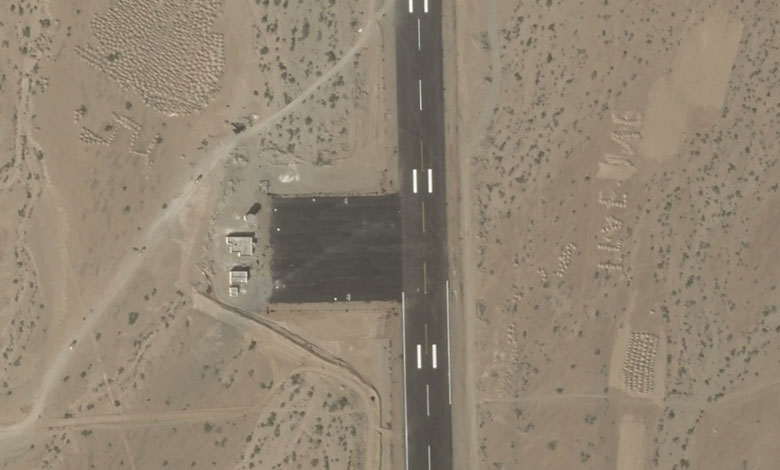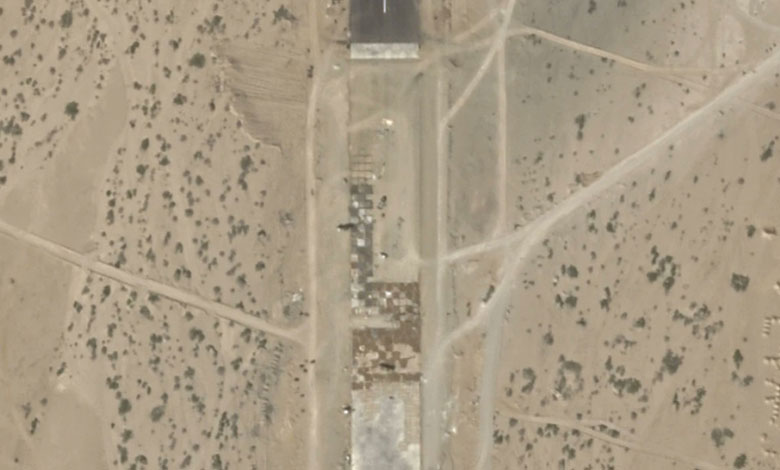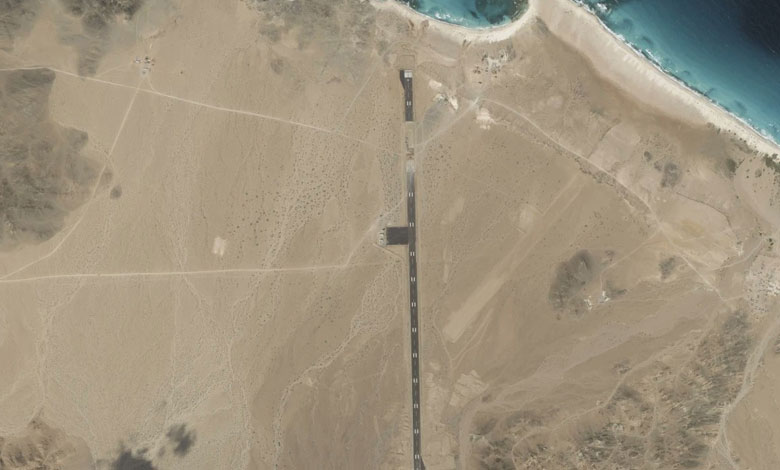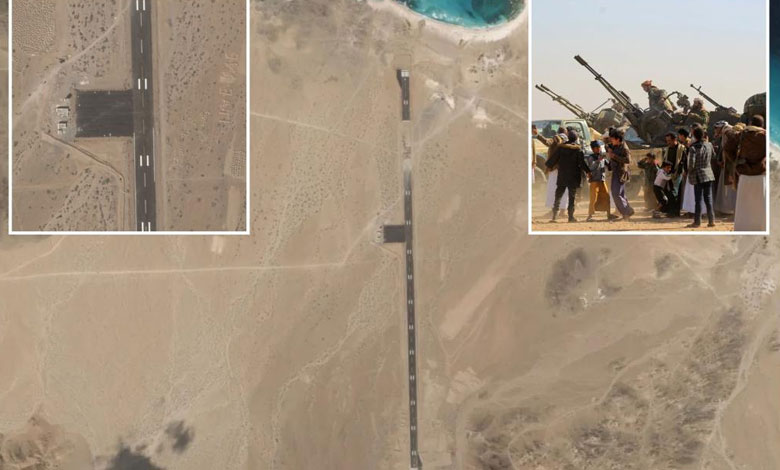Mysterious Airstrip Nears Completion on Yemeni Island Amid Houthi Threats
A new airstrip under construction on Abd al-Kuri Island in Yemen is nearing completion, according to satellite images analyzed by the Associated Press (AP). The island, strategically located near the Gulf of Aden, could serve as a key military outpost in a region plagued by conflict and escalating Houthi rebel attacks on commercial shipping.

Dubai: A new airstrip under construction on Abd al Kuri in Yemen is nearing completion, according to satellite images analyzed by the Associated Press (AP). The island, strategically located near the Gulf of Aden, could serve as a key military outpost in a region plagued by conflict and escalating Houthi rebel attacks on commercial shipping.
Table of Contents
Mysterious Airstrip on Abd al-Kuri Island
Satellite photos from Planet Labs PBC taken on January 7, 2024, reveal that the north-south runway is nearly finished, with heavy equipment and trucks actively working on the final segment. The 2.4-kilometer-long, 45-meter-wide runway is expected to accommodate private and military aircraft, though it is not suitable for large commercial planes or heavy bombers.
The airstrip is suspected to be built by the United Arab Emirates (UAE), which has been expanding its military influence in Yemen. The UAE has backed the Southern Transitional Council (STC) and played a key role in the Saudi-led war against the Iran-backed Houthi rebels.
Houthi Attacks and Regional Security Risks
This development comes at a time when Houthi attacks on commercial vessels in the Red Sea have severely impacted global shipping, cutting cargo and energy transport to Europe by half. The rebels have also launched drone and missile strikes against Israel and U.S. warships, escalating tensions in the region.
Security analysts warn that the Houthis may continue their military campaign even if a ceasefire is reached in the Israel-Gaza conflict. The group has used the ongoing war to justify its attacks, raising concerns about prolonged instability.
Strategic Importance of Abd al-Kuri Island
Part of the Socotra Archipelago, Abd al-Kuri is situated 95 km from Africa and 400 km from mainland Yemen. The UAE has previously attempted to establish military bases in the region, including in Eritrea and Mayun Island, a key location at the entrance of the Bab el-Mandeb Strait.
Satellite imagery also suggests similar runway expansions in Mocha and Dhubab, both in Yemen’s Taiz governorate. These projects, suspected to be UAE-backed, indicate a broader military strategy aimed at securing the Red Sea shipping lanes.
UAE Responds to Allegations
While the International Civil Aviation Organization (ICAO) has no official record of the new airstrip, the UAE insists that its presence in the region is for humanitarian purposes. The Emirati government stated that all operations in Yemen are conducted in cooperation with local authorities to enhance security and stability.
However, further evidence links the Emirati-flagged landing craft to the area, with vessel tracking data confirming its presence near Abd al-Kuri and Socotra Island multiple times in 2024. Additionally, piles of dirt near the runway spell out “I LOVE UAE”, signaling an official Emirati involvement in the airstrip’s construction.

Also Read: Over 40 Pakistanis Feared Dead as Migrant Boat Capsizes Off African Coast
Geopolitical Implications
With the U.S., Israel, Iran, and regional Gulf states involved in Yemen’s conflict, any miscalculation could escalate tensions further. The Houthis’ continued aggression and the UAE’s expanding military footprint in the region may significantly impact global trade routes, security operations, and Yemen’s political future.
Mysterious Airstrip on Abd al-Kuri Island
Satellite photos from Planet Labs PBC taken on January 7, 2024, reveal that the north-south runway is nearly finished, with heavy equipment and trucks actively working on the final segment. The 2.4-kilometer-long, 45-meter-wide runway is expected to accommodate private and military aircraft, though it is not suitable for large commercial planes or heavy bombers.

The airstrip is suspected to be built by the United Arab Emirates (UAE), which has been expanding its military influence in Yemen. The UAE has backed the Southern Transitional Council (STC) and played a key role in the Saudi-led war against the Iran-backed Houthi rebels.
Houthi Attacks and Regional Security Risks
This development comes at a time when Houthi attacks on commercial vessels in the Red Sea have severely impacted global shipping, cutting cargo and energy transport to Europe by half. The rebels have also launched drone and missile strikes against Israel and U.S. warships, escalating tensions in the region.
Security analysts warn that the Houthis may continue their military campaign even if a ceasefire is reached in the Israel-Gaza conflict. The group has used the ongoing war to justify its attacks, raising concerns about prolonged instability.

Strategic Importance of Abd al-Kuri Island
Part of the Socotra Archipelago, Abd al-Kuri is situated 95 km from Africa and 400 km from mainland Yemen. The UAE has previously attempted to establish military bases in the region, including in Eritrea and Mayun Island, a key location at the entrance of the Bab el-Mandeb Strait.
Satellite imagery also suggests similar runway expansions in Mocha and Dhubab, both in Yemen’s Taiz governorate. These projects, suspected to be UAE-backed, indicate a broader military strategy aimed at securing the Red Sea shipping lanes.
UAE Responds to Allegations
While the International Civil Aviation Organization (ICAO) has no official record of the new airstrip, the UAE insists that its presence in the region is for humanitarian purposes. The Emirati government stated that all operations in Yemen are conducted in cooperation with local authorities to enhance security and stability.
However, further evidence links the Emirati-flagged landing craft to the area, with vessel tracking data confirming its presence near Abd al-Kuri and Socotra Island multiple times in 2024. Additionally, piles of dirt near the runway spell out “I LOVE UAE”, signaling an official Emirati involvement in the airstrip’s construction.
Geopolitical Implications
With the U.S., Israel, Iran, and regional Gulf states involved in Yemen’s conflict, any miscalculation could escalate tensions further. The Houthis’ continued aggression and the UAE’s expanding military footprint in the region may significantly impact global trade routes, security operations, and Yemen’s political future.
As the world watches Yemen’s volatile situation unfold, the completion of this mysterious airstrip could reshape military dynamics in the Red Sea and the Gulf of Aden.
